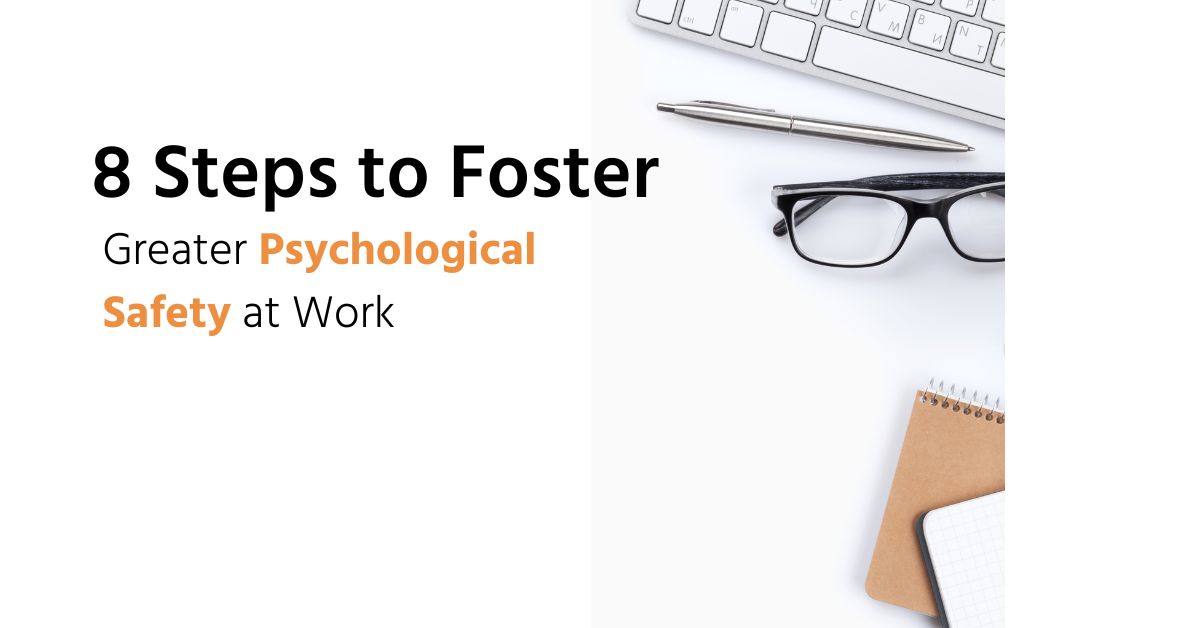Psychological Safety at Work
Psychological safety at work doesn’t require constant niceness. Instead, it’s about feeling comfortable enough to openly brainstorm, voice unfinished ideas, challenge norms, give feedback, and resolve conflicts together. Leaders prioritize honesty while team members support each other, fostering an environment where everyone values each other’s contributions.
In workplaces with psychological safety, individuals are at ease being their true selves. They don’t hesitate to be vulnerable in front of others. Organizations benefit greatly in such kinds of environment where employees freely ask questions, express concerns, seek assistance.
It’s crucial to acknowledge that team members may not all share the same perceptions. This is especially notable within senior leadership teams. Our research revealed significant variations in their levels of perceived psychological safety at work.
The Value of Psychological Safety at Workplace
Psychological safety at work isn’t merely a luxury but it directly influences the organization’s financial performance. Maintaining a high and consistent level of psychological safety enables all members of the workforce to fully contribute their talents. As a result they ultimately enhance the organization’s ability to avoid failure.
The shift towards hybrid workplaces and remote work arrangements due to the pandemic has complicated the task of creating psychological safety at work for today’s leaders. Building a sense of security at work becomes tougher when employees are not all in the same physical location and many are working from home.
Indeed, how can trust be built when face-to-face talks must be planned beforehand and most are done through a screen? Nevertheless, guiding remote teams offers leaders a special chance to form bonds and boost psychological safety — if they’re attentive.
In a virtual meeting on camera, you can gaze attentively at people, perhaps more than you would in person. (In many cultures, it can feel strange to stare at someone for 30 seconds or minutes at a time.) But during video calls, nobody can tell whom you’re focusing on, so you can observe the speaker closely — taking in not just their words, but also their feelings and beliefs. Leaders can take advantage of this chance to explore genuine communication in virtual settings by listening attentively.
Moreover, numerous individuals find it easier to type vulnerable statements through a screen (such as in a meeting chat) than speaking in person. In such situations, they might welcome the opportunity to take some extra time to consider how they want to communicate information for maximum effect. Leaders can demonstrate respect for those who bravely express their sincere thoughts — acknowledging the courage it takes to do so and responding with gratitude.
Here are 8 Steps to Foster Greater Psychological Safety at Work

The Best Guide for The Leaders
-
Prioritize Psychological Safety clearly and explicitly:
Discuss with your team why it’s essential to establish psychological safety at work. Link it to broader goals such as increased innovation, team involvement, and inclusivity within the organization. Don’t hesitate to seek assistance when necessary and be willing to lend a hand when requested. Lead by example by demonstrating the behaviors you wish to encourage, and establish a supportive environment by practicing inclusive leadership techniques.
-
Encourage Everyone to Speak about Their Thoughts:
Display sincere interest, value honesty, and respect straightforwardness. Stay receptive, caring, and attentive when someone raises a point that challenges the current situation. Companies that foster a coaching culture are likely to have team members who feel confident enough to speak honestly.
-
Set Guidelines for How Failure is Addressed:
Avoid penalizing experimentation and (reasonable) risk-taking. Acknowledge that mistakes provide a chance for learning and growth. Promote the idea of learning from failures and setbacks, and openly share the valuable lessons you’ve gained from your own mistakes. This approach will foster innovation rather than hinder it. Be honest when expressing both disappointment and appreciation.
-
Make an Area for Fresh Ideas:
Frame every challenge within a supportive environment. Decide whether you prefer ideas that have undergone rigorous testing or if you’re open to unconventional, imaginative concepts that are still in development. It’s acceptable to pose difficult questions, but ensure you maintain a supportive stance throughout. Explore ways to cultivate more innovative thinking within your team.
-
Welcome Constructive Disagreement:
Encourage genuine discussions and positive debates, aiming to resolve conflicts effectively. Lay the groundwork for gradual improvements by defining team standards that enhance psychological safety. Engage your team in conversations around the following inquiries:
• How will team members express their worries about a process that isn’t functioning properly?
• How can colleagues respectfully communicate their concerns with each other?
• What rules do we follow when dealing with different viewpoints?
-
Be Attentive and Seek Out Recurring Trends:
Concentrate on how team members individually perceive patterns of psychological safety, rather than just the overall level. Are there noticeable differences in how much psychological safety some members feel compared to others, or is the level relatively consistent across the team:
• Champion the importance of ensuring consistent psychological safety for all, emphasizing that it’s not merely a luxury but a crucial factor for success.
• Take into account the team’s existing beliefs when devising tactics to improve team psychological safety, recognizing that a uniform approach may not be suitable for everyone.
-
Actively Work to Encourage Open Conversation:
Encourage proficiency in both giving and receiving feedback, and ensure there’s room for individuals to express their concerns. Pose impactful, open-ended questions to colleagues and genuinely listen to comprehend their emotions, perspectives, and factual information. Offer chances for learning how to deliver constructive feedback and demonstrate what respectful responses entail.
Consider investing in enhancing the quality of discussions throughout the organization, as improved conversations directly contribute to a healthier culture. With enhanced abilities in providing feedback and a psychologically supportive workplace, employees will feel more comfortable expressing concerns and suggesting well-tested solutions.
-
Celebrate Achievements and Successes:
Recognize and appreciate what is going right. Positive interactions and conversations are founded on trust and mutual respect. Therefore, attribute credit and recognize expertise across the team, emphasizing collective success over individual achievement.
Celebrate even the smallest successes and show appreciation for people’s contributions. By encouraging and expressing gratitude, you strengthen your team members’ sense of self-worth. When team members take risks, seek assistance, or acknowledge mistakes, give them the benefit of the doubt. Trust that they will reciprocate the same level of trust in return.
Are you prepared to experiment with some simple, deliberate actions to foster psychological safety at work and personal life? Book a consultation with our experts today!

